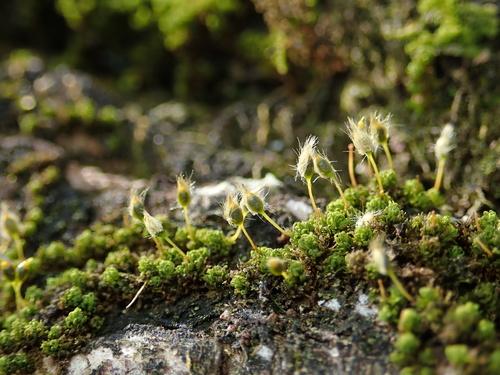
medium-44250.jpg from: https://plantdollar.com/plant/macromitrium/
Exploring the Fascinating World of Macromitrium petelotii Tixier Moss

2883150220_0b42c3511a_z.jpg from: https://flickriver.com/photos/gjshepherd/sets/72157607432120490/
Introduction
Mosses are often overlooked, but they play a vital role in many ecosystems around the world. One particularly interesting species is Macromitrium petelotii Tixier, a moss in the Orthotrichaceae family. In this blog post, we’ll dive into the details of this fascinating plant, from its morphology to its ecological roles. Get ready to learn about the marvelous world of Macromitrium!
Background
Macromitrium petelotii Tixier is a species of moss in the Orthotrichaceae family, which contains over 900 species worldwide. Mosses are non-vascular plants in the division Bryophyta and class Bryopsida

DES_caps_00256.JPG from: https://www.madbryo.org/bryophytes-reproduction
. They lack true roots, stems, and leaves, instead having structures that serve similar functions. Mosses reproduce via spores rather than seeds and are found in a wide range of habitats.

Rhytidiadelphus+triquetrus.jpg from: https://moss-musings.blogspot.com/2011/09/moss-names-and-taxonomy.html
Morphology and Identification
M. petelotii forms dense cushions or tufts. The stems are creeping to ascending, irregularly branched, and typically 1-3 cm long. Leaves are crowded, erect-spreading when dry, lanceolate, 1.5-2.5 mm long, with a short apiculus. The leaf margins are entire to minutely crenulate above. Macromitrium species can often be identified by their relatively large size compared to other mosses, their cushion-forming growth habit, and their distinct capsules with peristome teeth.
Global Distribution and Habitat
M. petelotii is found in Asia, including China, Vietnam, Thailand, and Indonesia. It typically grows on tree trunks and branches in montane forests at elevations of 800-2500 m. Like many mosses, it prefers humid environments and can tolerate shade. The global distribution of

macromitrium-brevicaule-01b.240×240-u1i1s1q90f1.jpg from: https://www.nzpcn.org.nz/flora/species/macromitrium-brevicaule/
Macromitrium is primarily tropical and subtropical, with the greatest diversity found in the Southern Hemisphere.

macromitriumlong.jpeg from: https://www.kaimaibush.co.nz/mosses/orthotrichaceae.html
Ecological Roles and Adaptations
Mosses like M. petelotii play important ecological roles. They help retain moisture, prevent soil erosion, and provide habitat for small invertebrates. Many mosses are also important in nutrient cycling, as they absorb nutrients from rainwater and release them slowly over time. Macromitrium

Macromitrium_prolong031018L.jpg from: https://www.digital-museum.hiroshima-u.ac.jp/~museum/habit/moss_habit/Macromitrium prolongatum/Macromitrium_prolongatum.html
species have several adaptations that allow them to thrive in their environments, including:
- Cushion-forming growth habit that helps retain moisture

medium.jpg from: https://enciclovida.mx/especies/147664
- Poikilohydric water regulation (ability to tolerate desiccation)

pexels-photo-2111877.jpeg from: https://www.pexels.com/photo/macro-moss-2111877/
- Lightweight spores easily dispersed by wind
- Asexual reproduction via fragmentation
Conclusion
Macromitrium petelotii Tixier is a prime example of the incredible diversity and adaptability of mosses. From its distinct morphology to its ecological importance, this species reminds us to appreciate the small wonders of nature. Next time you’re in a humid forest, take a closer look – you might just spot a patch of Macromitrium making its quiet but vital contribution to the ecosystem. What other overlooked species might be out there, waiting to be discovered and understood?